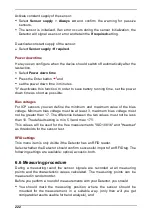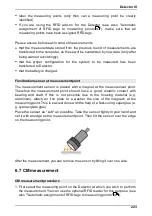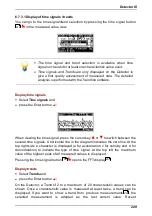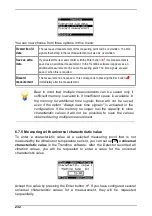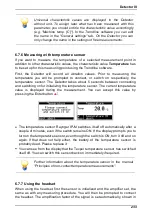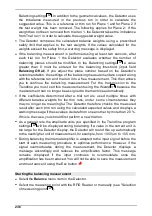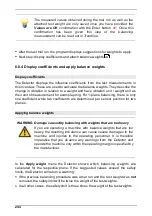
234
the display and can be adjusted manually by the cursor keys
or
. If this value
is shown with an exclamation mark and inverted, the amplifier is over range.
6.8 Balancing measurement
The purpose of balancing is to compensate for imbalances in rotating parts
through the precision attachment of balance weights in order to extend their
service life. You can use the Detector III to quickly and reliably determine the best
location of up to two counterweights.
WARNING
Damage due to balancing in the resonance range
If you are b alancing a machine in the resonance range, even the
smallest changes of weight may lead to severe fluctuations of the
vib ration amplitude. This may cause serious damage to the
machine and operator injuries.
Therefore, do not perform b alancing in the machine resonance
range.
If you do not know the resonance ranges,
ask the manufacturer or consult the enclosed documents ab out
the resonance range of the device b eing monitored
or determine the resonance range b y means of a run up/coast
down (see "Determining the resonance range of a machine
").
If you use the weights suggested b y the Detector, it is imperative
that you check the plausib ility of these weights. In the b alancing
settings, ensure that you have entered the correct values for the
rotor mass and radius b ecause these are factored into the
calculation.
Procedure for a balancing measurement
1. Measurement of rotational speed
: The Detector initially measures the
rotational speed of the component: the trigger sensor counts the revolutions
using a reflex mark which is attached to the component as a reference.
: During the referencing measurement the amplitude and
phase of the existing imbalance is measured at the sensor positions. This
serves as the basis for the calculation of positions of weights.
247
239
240



